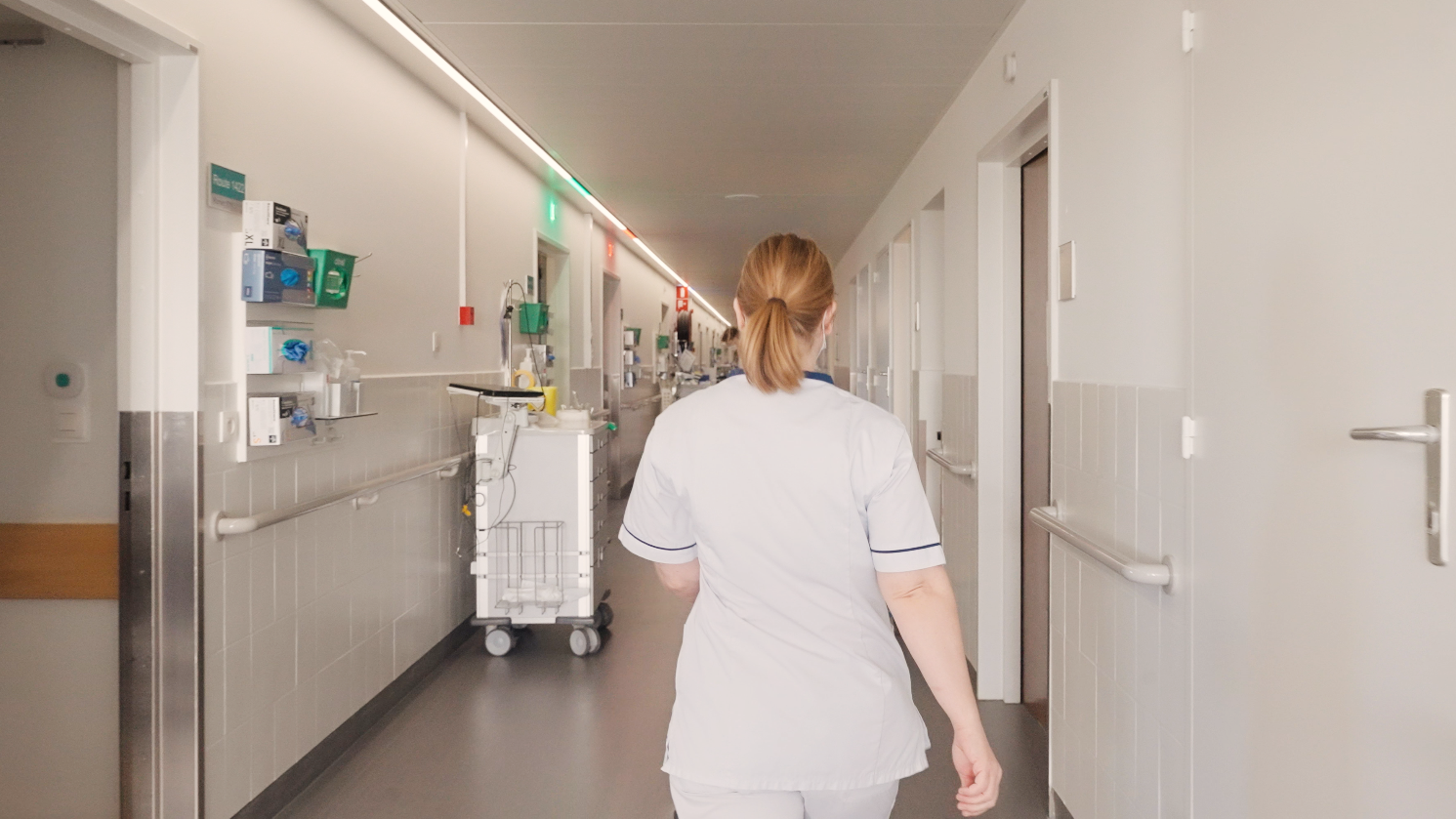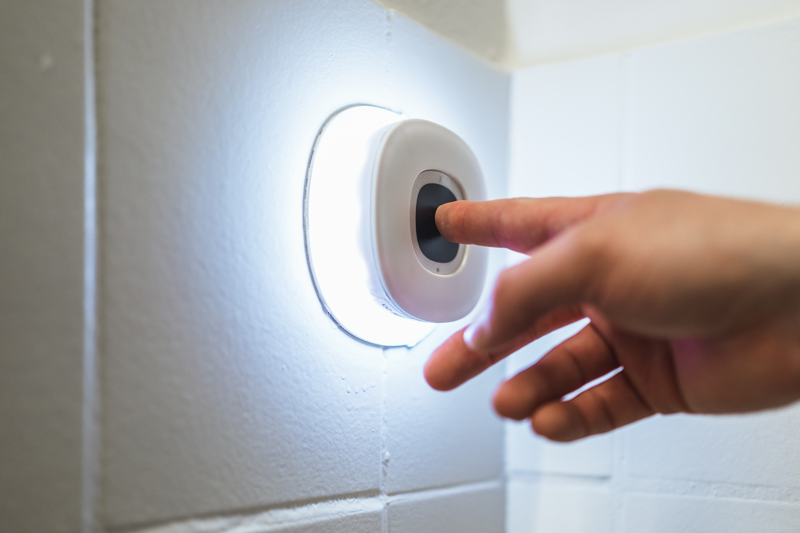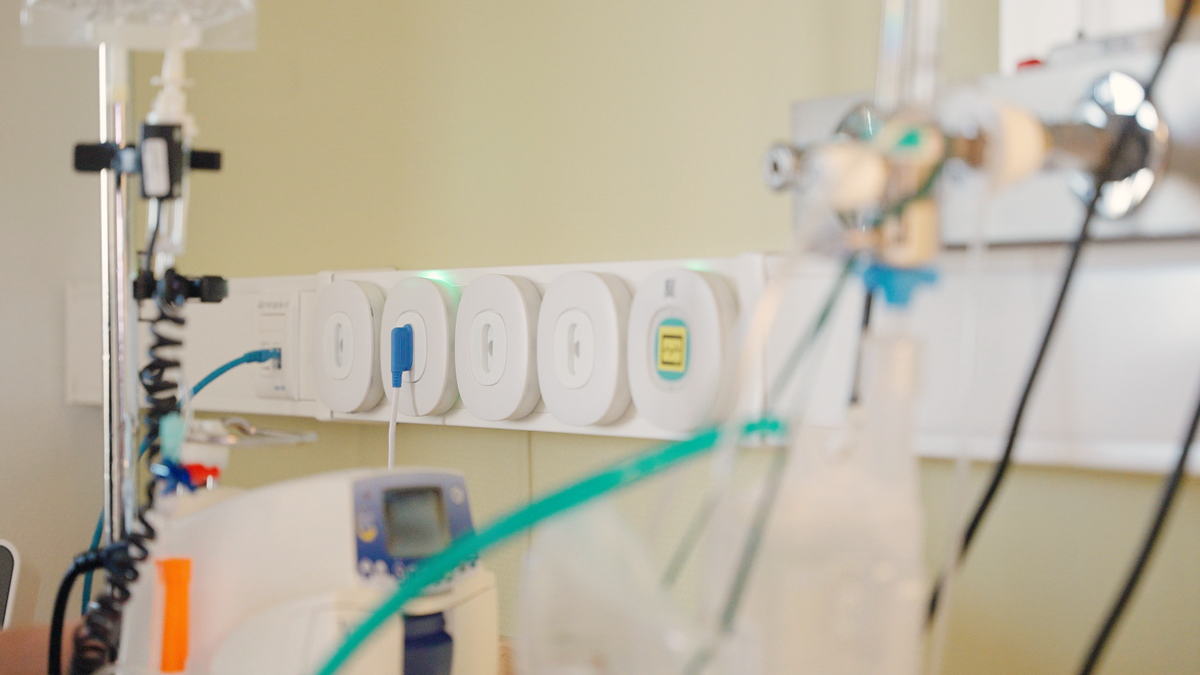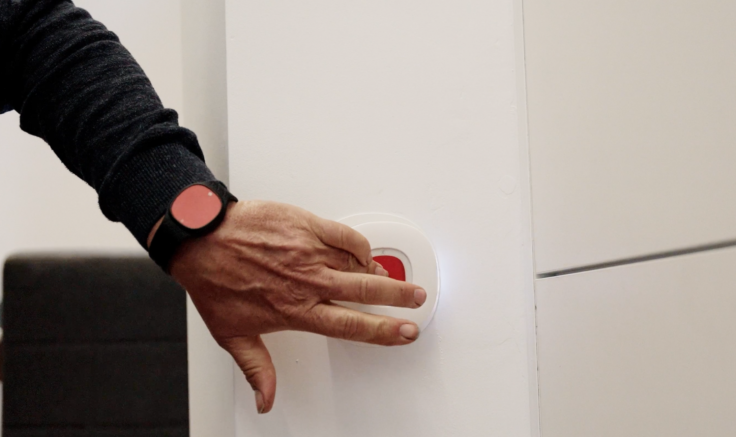Ghent University Hospital

case.clientUZ Ghent
case.year2022
Nahtlose kritische Kommunikation dank intelligenter Beleuchtung im Universitätskrankenhaus Gent
Das Universitätskrankenhaus Gent möchte seinen Pflegekräften und Patienten in der (Corona-)Abteilung für Atemwegserkrankungen eine effizientere und bessere Pflegeerfahrung bieten. Um dies zu erreichen, setzt das Universitätskrankenhaus Gent seit kurzem auf innovative Spitzentechnologie von LynX® für nahtlose kritische Kommunikation. Was genau ermöglicht dieses System?
Konkret hat das Universitätskrankenhaus Gent in Zusammenarbeit mit dem Systemintegrator 25-8 Smartphones, intelligente Beleuchtung und ein (drahtloses) medizinisches und pflegerisches Rufsystem in den täglichen Betrieb der Abteilung für Atemwegserkrankungen integriert. So hat das Krankenhaus nicht nur die Abteilung verbessert, sondern es den Pflegekräften dank der neuen Technologie auch ermöglicht, sich besser und effizienter als je zuvor um die Patienten zu kümmern. Darüber hinaus wurde eine vollständig redundante Installation eingerichtet, die sicherstellt, dass auch bei einem akuten Stromausfall Patientenrufe und Anrufe von medizinischen Geräten gewährleistet bleiben.
Erstmals verfügt die Abteilung für Atemwegserkrankungen über ein brandneues medizinisches Rufsystem, mit dem die Pflegekräfte die medizinischen Geräte, die ihre Patienten überwachen, von überall und jederzeit auf ihren Smartphones kontaktieren können. Jedes Krankenbett bietet hierfür vier Anschlusspunkte, die ausschließlich von autorisiertem Personal über Badges bedient werden können. LEDs hinter den Anschlusspunkten zeigen deutlich an, ob das medizinische Gerät richtig angeschlossen ist.

Auch auf Distanz immer in der Nähe
Darüber hinaus verfügt jedes Zimmer der renovierten Atemwegsabteilung über ein kleines Display mit Sprech-Hör-Funktion. Wenn Pflegekräfte gerade keine Hände frei haben, um ihr Smartphone zu bedienen, können sie über dieses System mit Patienten oder Kollegen sprechen und deren Anrufe entgegennehmen und erhalten so eine Sprachrückmeldung. Auch Anrufe, die Pflegebedürftige ganz einfach über ihre drahtlose Ruftaste tätigen können.

Schnelle Reaktion im Bedarfsfall
Wenn Pflegekräfte im Zimmer Hilfe leisten müssen, werden sie nun optisch durch smarte Beleuchtung unterstützt und können so schneller als je zuvor zum hilfsbedürftigen Patienten gelangen.
Jeder Status – Pflegeruf, Assistenzruf, Notruf – hat eine eigene Farbe. So werden Notrufe beispielsweise durch blaue Blöcke angezeigt, die über weißes Licht zum Einsatzort laufen.
Zusätzlich hilft die LED-Linie dabei, eine optimale Atmosphäre zu schaffen. Pflegekräfte können entweder selbst die Lichtfarbe und -intensität wählen oder das System folgt einem zeitbasierten Programm. Tagsüber ist die Abteilung hell mit leicht bläulichem Licht beleuchtet, um Informationen auf Bildschirmen besser einsehen oder Dokumente optimal lesen zu können. Abends ist das Licht intimer, wärmer und gedämpfter.



